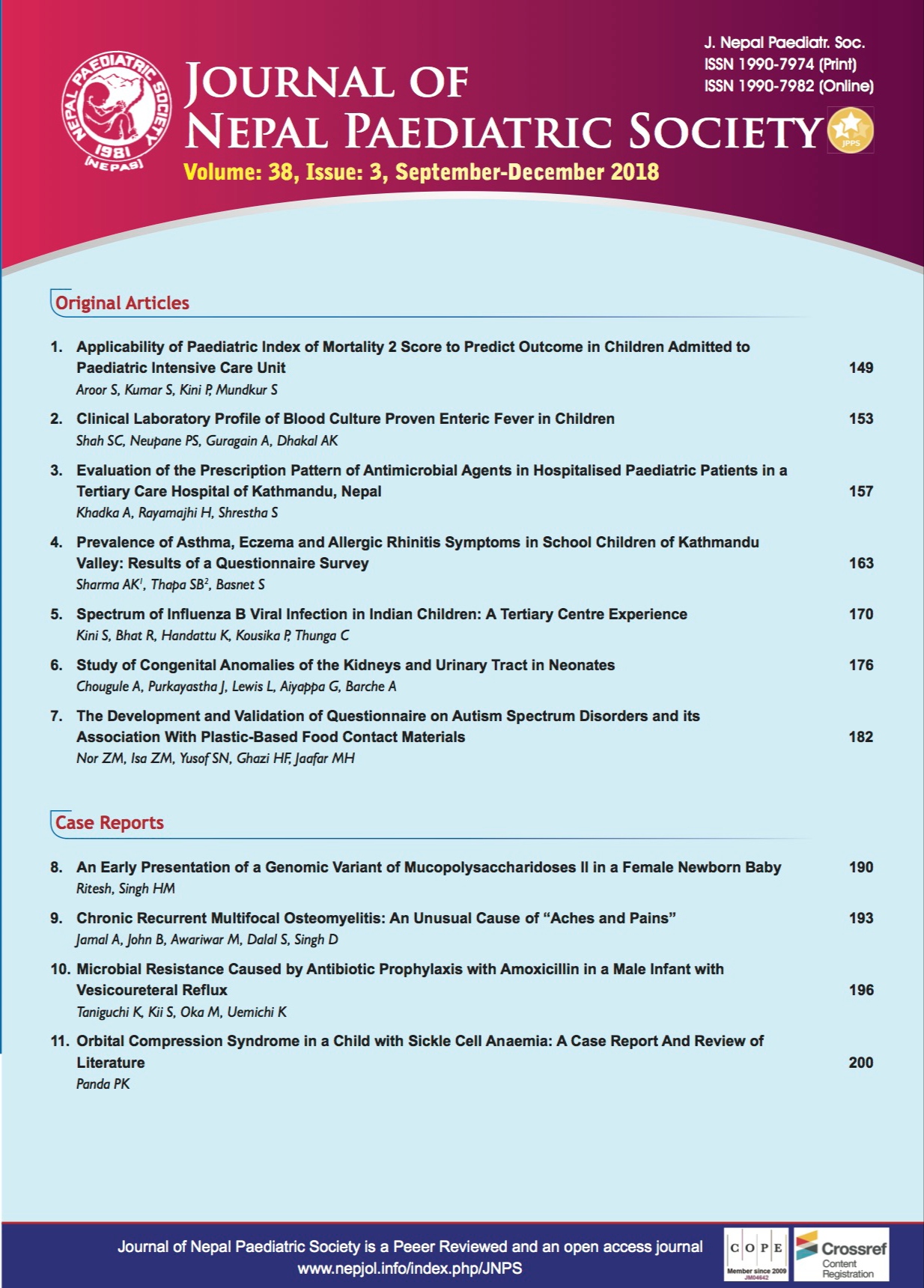Clinical Laboratory Profile of Blood Culture Proven Enteric Fever in Children
DOI:
https://doi.org/10.3126/jnps.v38i3.27512Keywords:
Nepal, salmonella typhi, typhoid feverAbstract
Introduction: Enteric fever has diverse clinical presentations and laboratory findings and blood culture is gold standard for diagnosis in the children. This study was done to analyse clinical profile and laboratory findings in culture proven enteric fever.
Material and Methods: The study was descriptive observational study carried out in the patient aged 14 years of age or less admitted with culture proven enteric fever admitted in a Paediatric ward of a tertiary medical centre in Lalitpur, Nepal from April 2009 to February 2018.
Results: Forty children with blood culture proven were enrolled in the study. All children had fever with the mean duration of 5.3 days (1-14). The most common associated symptoms were gastrointestinal which included anorexia (47.5%), pain abdomen (37.5%), vomiting (37.5%), diarrhoea (15%) and constipation (5 %). Splenomegaly (25%) and hepatomegaly (17.5%) were the commonest signs. The majority of children (80%) had normal total leucocyte count and 32.5% of them had anaemia. There were no children with thrombocytopenia. Salmonella typhi and Salmonella paratyphi A were isolated in 70% and 30% of children respectively. None of the isolates showed drug resistance against ceftriaxone, chloramphenicol, cotrimoxazole, gentamicin, norfloxacin and ofloxacin. There was no mortality.
Conclusions: Enteric fever should be suspected in all the children with fever for more than five days along with anorexia, gastrointestinal associated symptoms and normal white blood counts.
Downloads
Downloads
Published
How to Cite
Issue
Section
License
Authors who publish with this journal agree to the following terms:
Authors retain copyright and grant the journal right of first publication with the work simultaneously licensed under a Creative Commons Attribution License that allows others to share the work with an acknowledgement of the work's authorship and initial publication in this journal.
Authors are able to enter into separate, additional contractual arrangements for the non-exclusive distribution of the journal's published version of the work (e.g., post it to an institutional repository or publish it in a book), with an acknowledgement of its initial publication in this journal.
Authors are permitted and encouraged to post their work online (e.g., in institutional repositories or on their website) prior to and during the submission process, as it can lead to productive exchanges, as well as earlier and greater citation of published work (See The Effect of Open Access).



